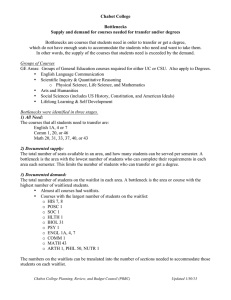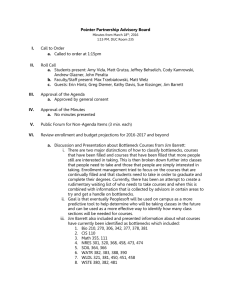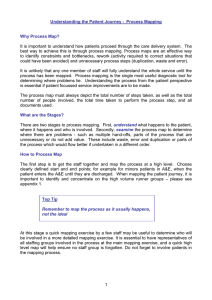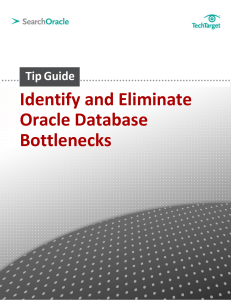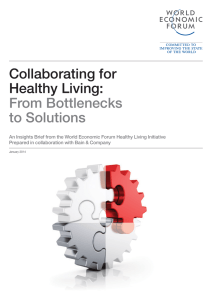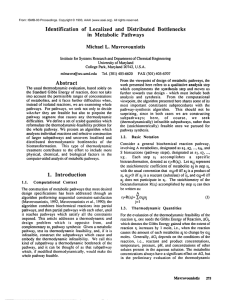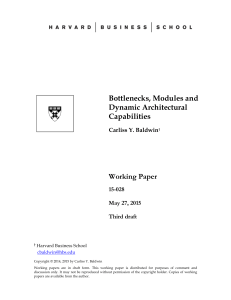ANALYSIS 1 = TRANSFER, using CSU GE areas
advertisement
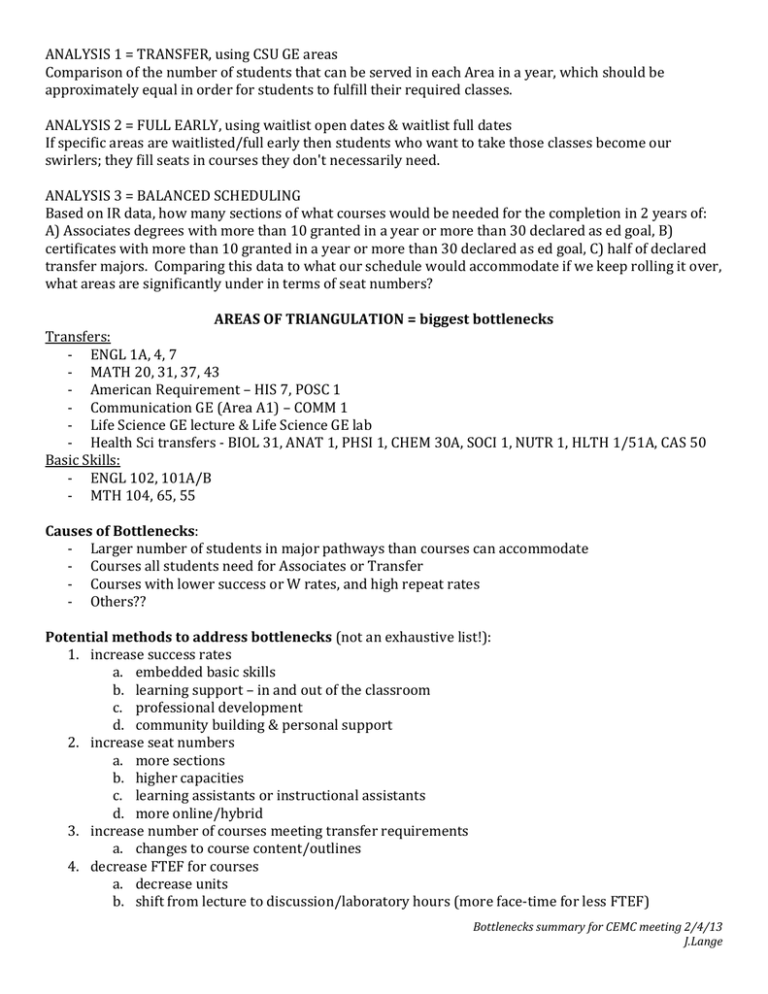
ANALYSIS 1 = TRANSFER, using CSU GE areas Comparison of the number of students that can be served in each Area in a year, which should be approximately equal in order for students to fulfill their required classes. ANALYSIS 2 = FULL EARLY, using waitlist open dates & waitlist full dates If specific areas are waitlisted/full early then students who want to take those classes become our swirlers; they fill seats in courses they don't necessarily need. ANALYSIS 3 = BALANCED SCHEDULING Based on IR data, how many sections of what courses would be needed for the completion in 2 years of: A) Associates degrees with more than 10 granted in a year or more than 30 declared as ed goal, B) certificates with more than 10 granted in a year or more than 30 declared as ed goal, C) half of declared transfer majors. Comparing this data to what our schedule would accommodate if we keep rolling it over, what areas are significantly under in terms of seat numbers? AREAS OF TRIANGULATION = biggest bottlenecks Transfers: - ENGL 1A, 4, 7 - MATH 20, 31, 37, 43 - American Requirement – HIS 7, POSC 1 - Communication GE (Area A1) – COMM 1 - Life Science GE lecture & Life Science GE lab - Health Sci transfers - BIOL 31, ANAT 1, PHSI 1, CHEM 30A, SOCI 1, NUTR 1, HLTH 1/51A, CAS 50 Basic Skills: - ENGL 102, 101A/B - MTH 104, 65, 55 Causes of Bottlenecks: - Larger number of students in major pathways than courses can accommodate - Courses all students need for Associates or Transfer - Courses with lower success or W rates, and high repeat rates - Others?? Potential methods to address bottlenecks (not an exhaustive list!): 1. increase success rates a. embedded basic skills b. learning support – in and out of the classroom c. professional development d. community building & personal support 2. increase seat numbers a. more sections b. higher capacities c. learning assistants or instructional assistants d. more online/hybrid 3. increase number of courses meeting transfer requirements a. changes to course content/outlines 4. decrease FTEF for courses a. decrease units b. shift from lecture to discussion/laboratory hours (more face-time for less FTEF) Bottlenecks summary for CEMC meeting 2/4/13 J.Lange
